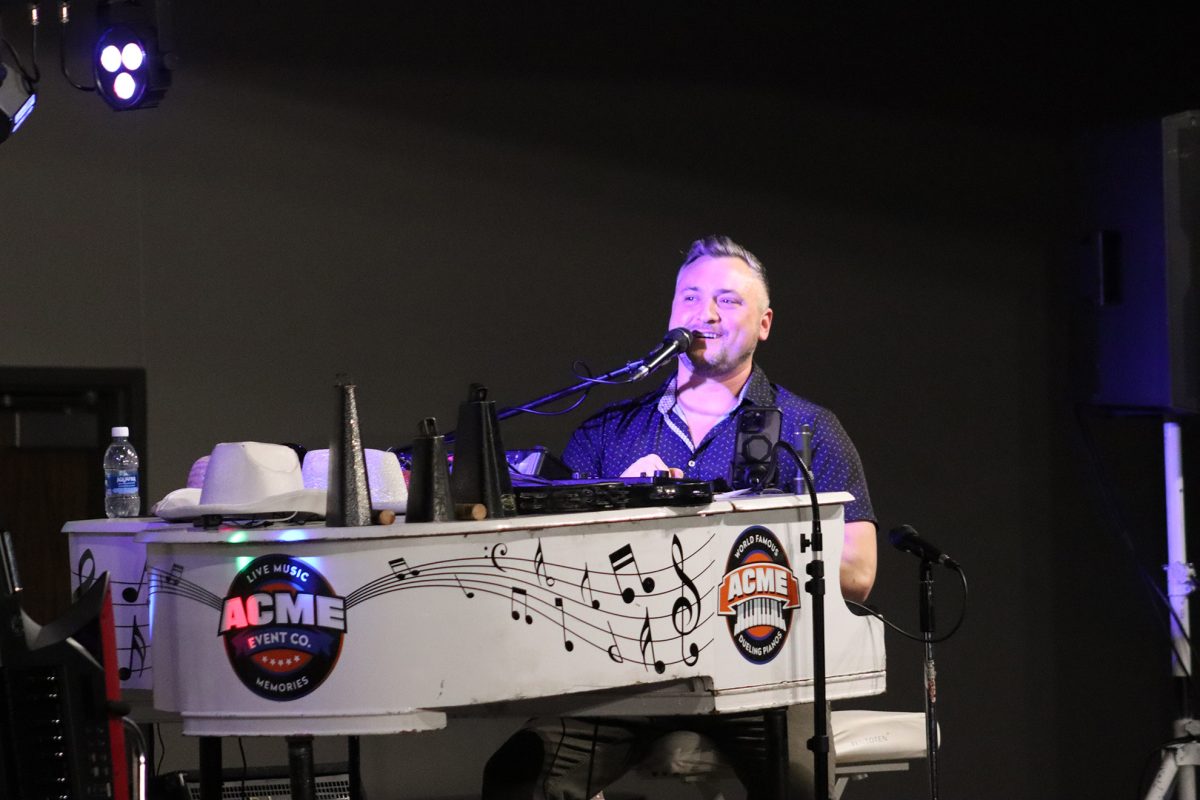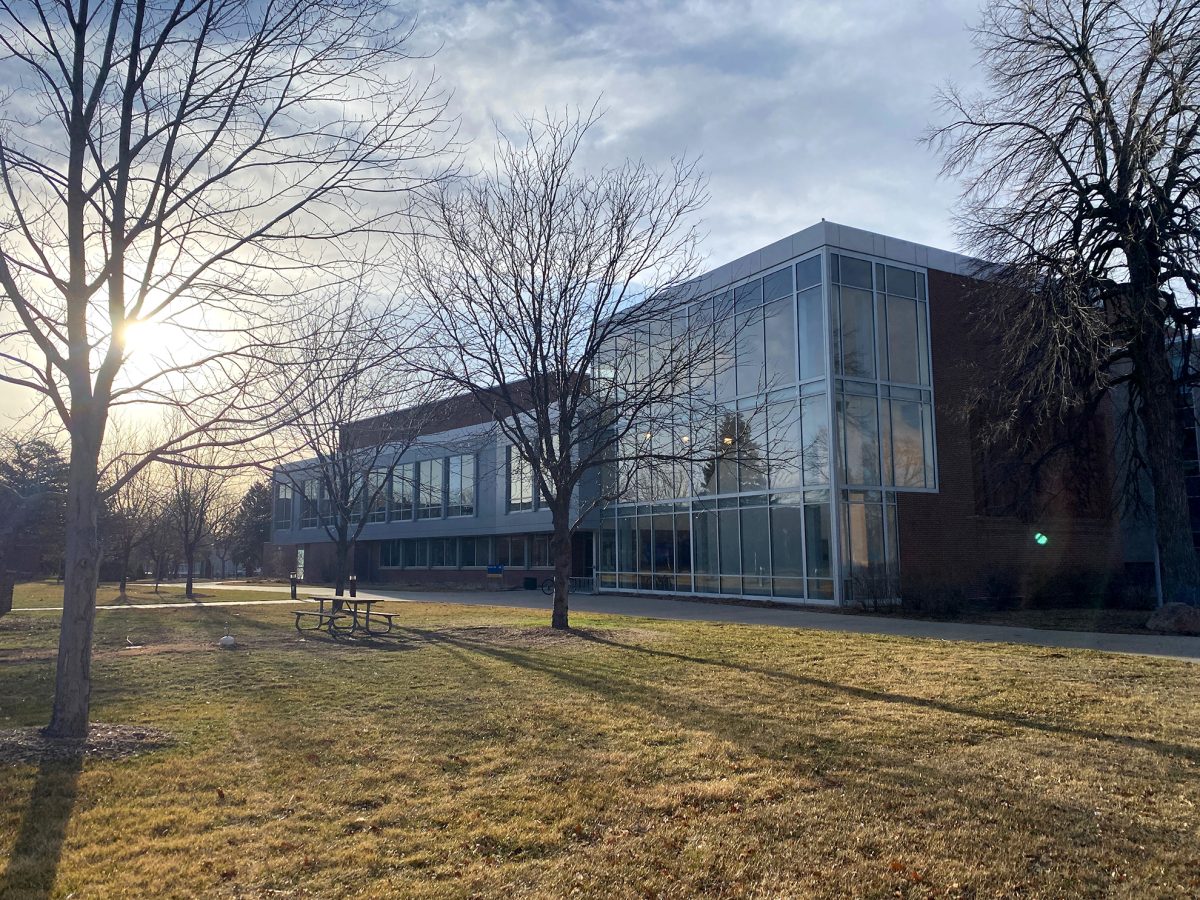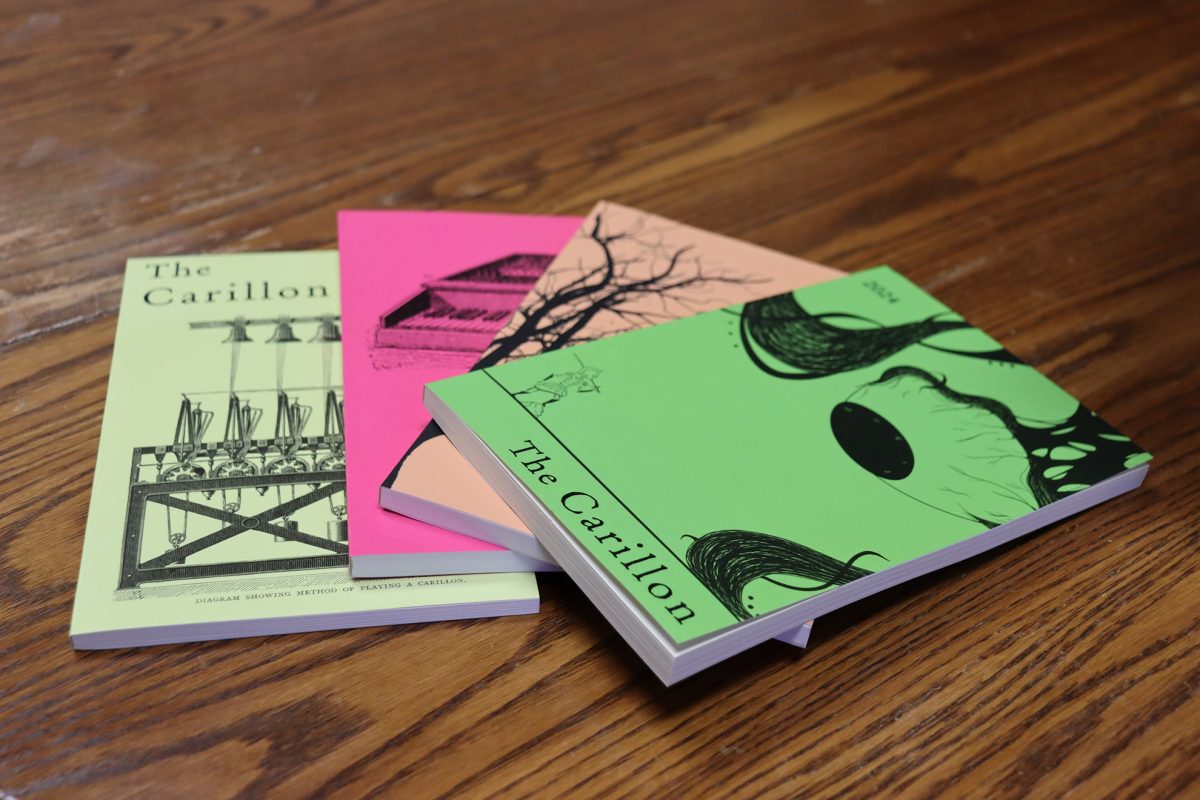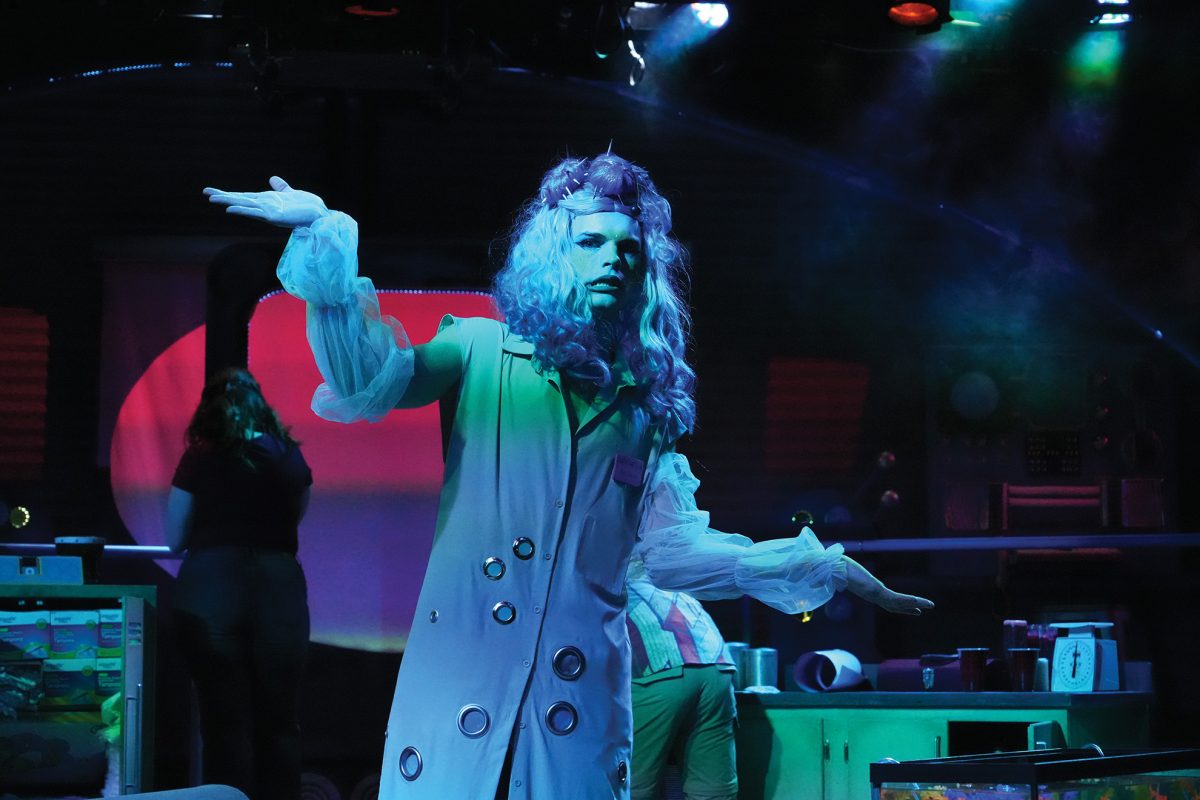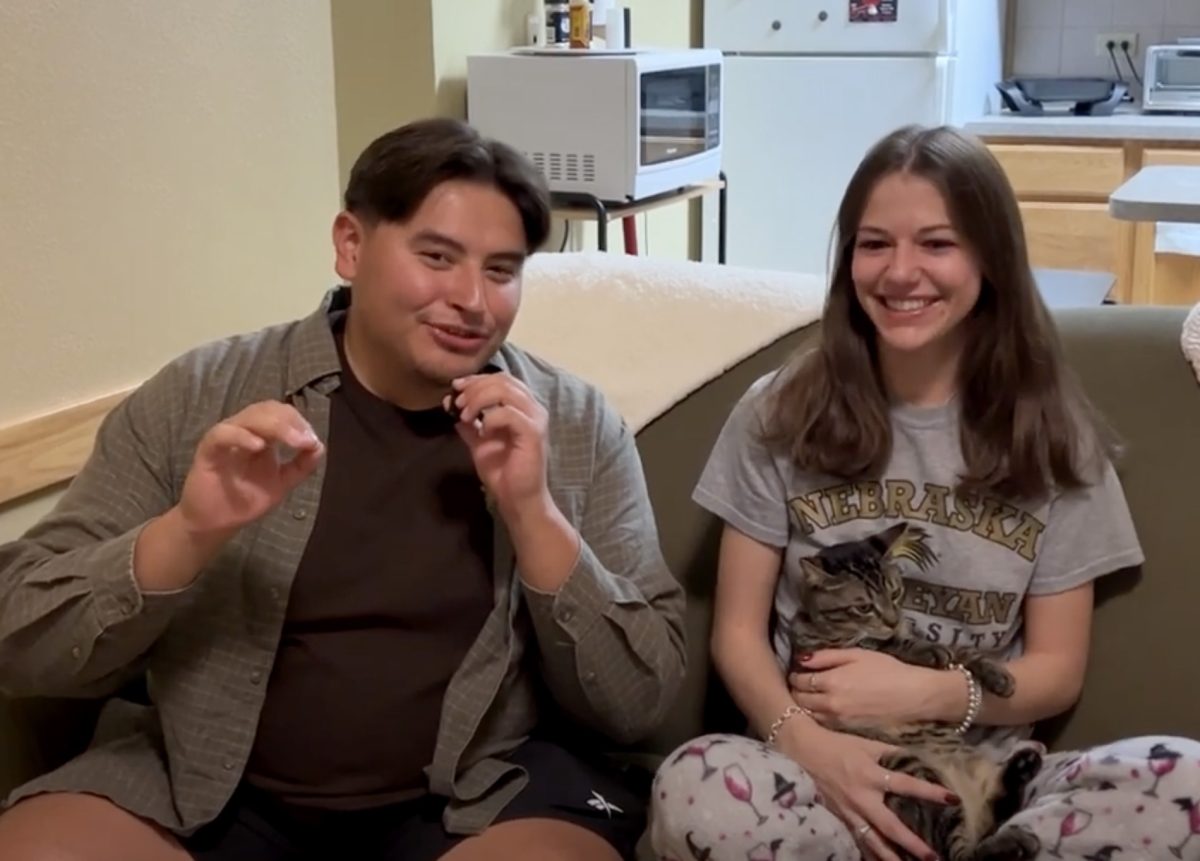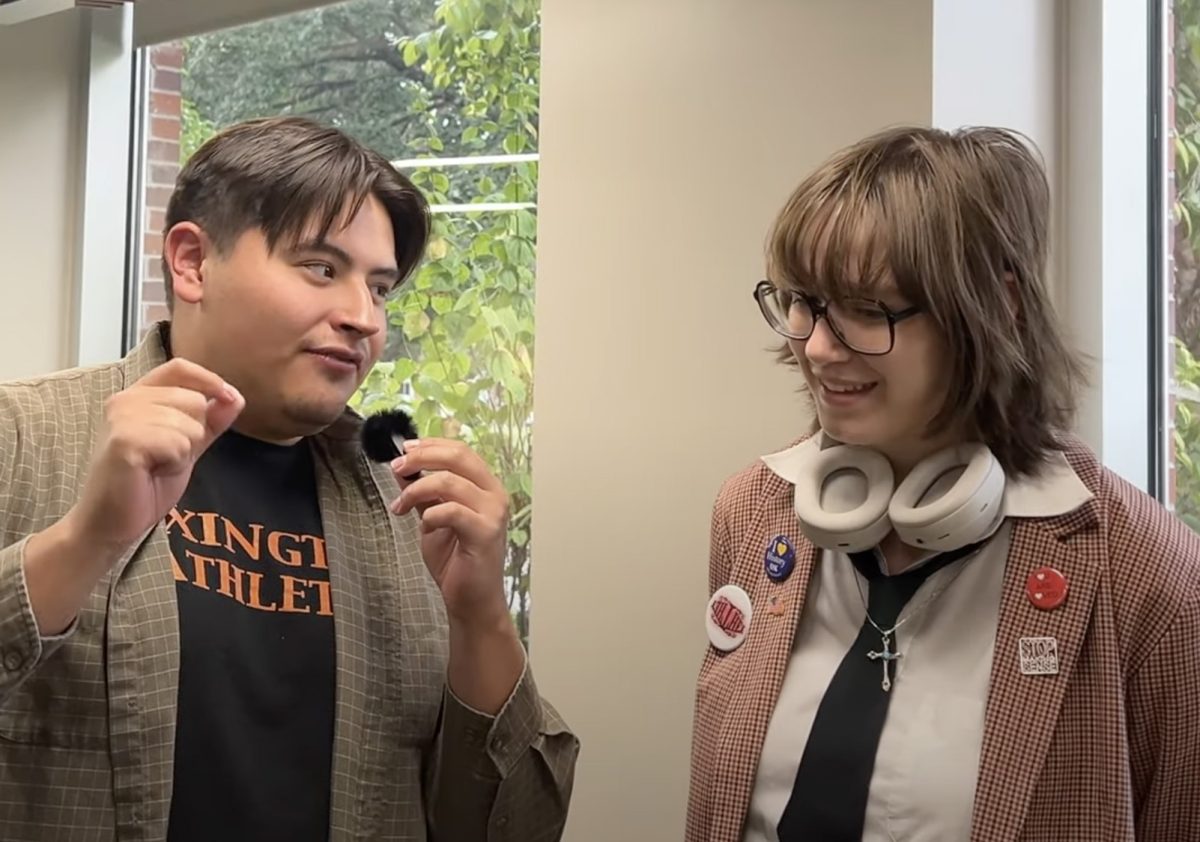delgadosandovals@lopers.unk.edu
Robert Eggers’s 2024 rendition of “Nosferatu” breathes new life into the iconic vampire narrative, delivering a film that is both a homage to its predecessors and a bold reimagining for contemporary audiences. With a stellar cast, meticulous direction and a haunting atmosphere, this adaptation stands as a testament to Eggers’ prowess in the Gothic horror genre.
“Nosferatu” is a remake of the 1922 silent film “Nosferatu: A Symphony of Horror.” Set in 1838, “Nosferatu” is a Gothic tale of obsession and supernatural horror, centering on Thomas Hutter, a young real estate agent.
Hutter is sent to a remote castle in Eastern Europe to finalize a business deal with the enigmatic Count Orlok. Hutter’s journey begins innocently enough, but as he reaches the eerie, decayed castle, he quickly realizes that his host is no ordinary nobleman. Orlok, a grotesque and ancient vampire, becomes fixated on Hutter’s wife, Ellen, whose beauty and purity seem to captivate him.
As Hutter fights to escape the castle, Orlok sets sail in search of Ellen, bringing with him a deadly plague that spreads through the town upon his arrival. Ellen, tormented by nightmarish visions, becomes increasingly convinced that she alone holds the power to stop the vampire.
Eggers’s direction is meticulous, immersing the audience in a world that feels both timeless and immediate. The film’s visual composition is a masterclass in atmospheric horror, with each frame meticulously crafted to evoke a sense of dread and unease. The use of shadow and light plays a crucial role, harkening back to the expressionist roots of the original 1922 silent film while incorporating modern cinematic techniques. The production design and costumes are richly detailed, grounding the supernatural elements in a tangible reality that enhances the horror.
The performances elevate “Nosferatu” beyond a simple homage. Nicholas Hoult delivers a solid portrayal of Hutter, capturing his transition from naive optimism to sheer terror. Lily-Rose Depp shines as Ellen, portraying a beautifully deep character haunted by an internal conflict between attraction and revulsion.
However, it is Bill Skarsgård’s Count Orlok who truly steals the show. His deep, booming voice adds to the film’s surreal and unsettling tone. Undeniably grotesque and forbidding, some may find his portrayal truly terrifying, making his interpretation of the vampire quite brilliant.
The supporting cast adds depth to the narrative, particularly Willem Dafoe’s Professor Von Franz. Dafoe leans into the absurdity of the role, delivering lines with an exaggerated flair. His moments of sudden appearance in the frame bring an unsettling, almost humorous quality to his character, adding to the film’s occasional darkly, comedic undertones.
One of the film’s most striking aspects is its sound design. The auditory elements are intricately woven into the narrative, with a haunting score that underscores the film’s unsettling atmosphere. The eerie creaks of Orlok’s ship, the whispers of Ellen’s nightmares and the muted screams of Hutter’s terror all contribute to a deeply powerful experience.
The film is permeated with the otherworldly quality that has defined the vampire story for over a century, while the hauntingly textured cinematography elevates the film to the level of high art. Eggers has created a world that feels alive, rich with historical authenticity and Gothic splendor.
Robert Eggers’s “Nosferatu” is an elaborate and intelligent love letter to the original, retaining the Gothic horror elements while exploring new psychological and thematic depths. The film, as a whole, is a mesmerizing experience, a beautifully rendered nightmare that lingers long after the credits roll.


